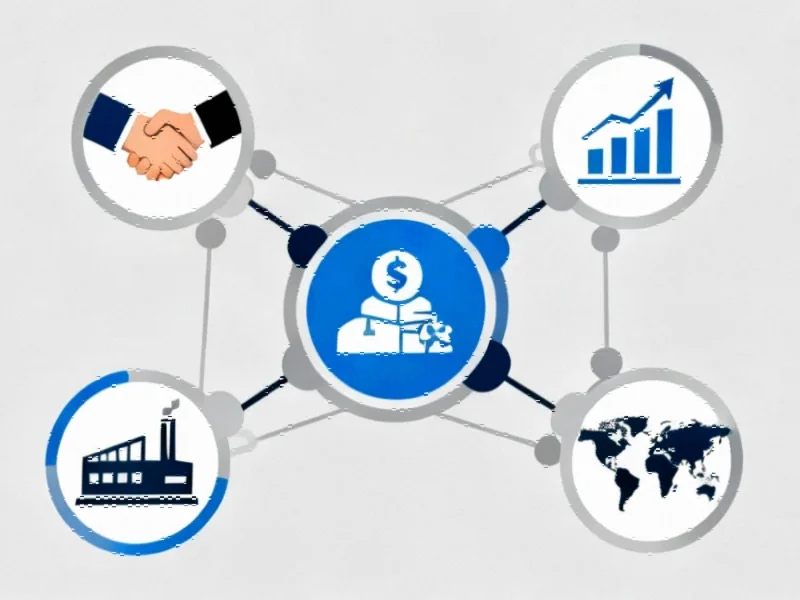Manufacturing’s Dynamic Evolution Through Strategic Moves
The manufacturing sector continues to demonstrate remarkable adaptability through diverse growth strategies that extend beyond traditional acquisitions. Companies are increasingly leveraging fundraising, strategic partnerships, and targeted expansions to strengthen their market positions and technological capabilities. This comprehensive analysis examines how manufacturers are navigating today’s complex business landscape through calculated strategic decisions.
Funding Fuels International Growth and Technological Advancement
Caracol’s landmark $4 billion venture capital round represents one of the most significant manufacturing investments this quarter, positioning the company for substantial international expansion into the Asian/Pacific region. CEO Francesco De Stefano described this funding as “a generational step” that validates the company’s vision and execution capabilities. The capital infusion will accelerate development in software, automation, and additive manufacturing technologies for both metal and polymer applications.
This substantial investment aligns with broader market trends where manufacturers are securing unprecedented funding levels to drive innovation and global market penetration. The emphasis on additive manufacturing particularly reflects the industry’s shift toward more flexible, efficient production methods that can respond quickly to changing market demands.
Strategic Acquisitions Enhance Core Capabilities
Excelitas Technologies demonstrated how targeted acquisitions can strengthen core competencies through its agreement to acquire Luxium Solutions. While financial terms remain undisclosed, the strategic value is clear: Excelitas gains access to Luxium’s specialized materials, substrates, and components business. CEO Roy Keating emphasized how this acquisition advances the company’s optics capabilities while supporting their strategy to increase presence in high-growth end markets.
This move exemplifies how established manufacturers are using acquisitions to rapidly acquire specialized technologies rather than developing them internally. Such strategic manufacturing moves often provide immediate access to new capabilities and customer bases, accelerating growth trajectories in competitive sectors.
Expansion Investments Drive Regional Economic Development
Nidec’s $19 million investment in its Mena, Arkansas facility represents a significant commitment to American manufacturing infrastructure. The 61,000-square-foot expansion project is expected to create 35 new jobs over five years while enhancing the company’s manufacturing and testing capabilities. Claudemir dos Santos, Nidec’s VP of Operations for the Americas, highlighted how the expansion will support the production of large vertical and horizontal motors for the fossil fuel and water/wastewater industries.
Similarly, Impact Confections’ $12.4 million expansion of its Janesville, Wisconsin factory demonstrates how even specialized manufacturers are investing in operational efficiency and automation. The project, which received $215,000 in tax credits from the Wisconsin Economic Development Corporation, will upgrade equipment for producing Warheads sour candies and other confections while reducing downtime. Wisconsin Governor Tony Evers noted the expansion sets new standards for manufacturing automation in the state.
These expansion projects reflect how industry developments in automation and efficiency are driving investment decisions across diverse manufacturing sectors, from industrial motors to food production.
Strategic Partnerships Create Integrated Technology Solutions
The partnership between Brightly Software (a Siemens company) and XOi Technologies illustrates how manufacturers are leveraging external expertise to enhance their offerings. By integrating XOi’s asset data collection system into Brightly’s Computerized Maintenance Management System, the partnership addresses a critical need in modern manufacturing: real-time visibility into equipment performance and maintenance needs.
Don Kurelich of Brightly emphasized that “gathering quality asset data is foundational for smart manufacturing,” highlighting how this partnership represents an important step toward delivering comprehensive operational intelligence. Such collaborations are becoming increasingly common as manufacturers seek to offer more integrated solutions that address multiple aspects of the production lifecycle.
These types of strategic alignments reflect broader recent technology trends where specialized companies combine capabilities to create more comprehensive solutions for industrial customers.
The Future of Manufacturing Strategy
As these examples demonstrate, successful manufacturers are pursuing multi-faceted growth strategies that combine targeted investments, strategic partnerships, and capability-enhancing acquisitions. The common thread across these approaches is the focus on building sustainable competitive advantages through technological advancement and operational excellence.
The manufacturing landscape continues to evolve rapidly, with companies increasingly looking to related innovations in materials science, data analytics, and automation to drive growth. As manufacturers navigate this complex environment, the ability to execute coordinated strategies across multiple fronts will separate industry leaders from followers.
Looking ahead, we can expect to see continued emphasis on market trends that prioritize flexibility, technological integration, and data-driven decision making. The manufacturers who succeed will be those who can effectively balance immediate operational improvements with longer-term strategic positioning in evolving global markets.
These strategic directions are further informed by industry developments in adjacent technology sectors, where cloud computing and data management innovations are creating new possibilities for manufacturing optimization and supply chain integration.
Ultimately, the future of manufacturing will be shaped by companies that can effectively leverage related innovations across multiple domains to create more responsive, efficient, and intelligent production ecosystems.
This article aggregates information from publicly available sources. All trademarks and copyrights belong to their respective owners.
Note: Featured image is for illustrative purposes only and does not represent any specific product, service, or entity mentioned in this article.



